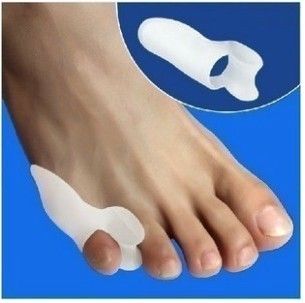What Is A A Bunionectomy?
Overview
 A bunion is a bony prominence on the side of the foot, at the base of the big toe joint. This enlargement of the joint, spurring, bump or lump can be aggravated by sports and tight shoes. There is progressive movement of the big toe outward, toward the other toes. As the ?bump? gets bigger, shoes can increase pressure on the base of the big toe causing more and more discomfort or pain. The term Hallux Valgus is the medical name for this condition.
A bunion is a bony prominence on the side of the foot, at the base of the big toe joint. This enlargement of the joint, spurring, bump or lump can be aggravated by sports and tight shoes. There is progressive movement of the big toe outward, toward the other toes. As the ?bump? gets bigger, shoes can increase pressure on the base of the big toe causing more and more discomfort or pain. The term Hallux Valgus is the medical name for this condition.
Causes
Bunions are most often caused by an faulty foot mechanics. It is not the bunion itself that is inherited, but certain foot types that make a person prone to developing a bunion. Although wearing shoes that crowd the toes won't actually cause bunions in the first place, it sometimes makes the deformity get progressively worse. That means you may experience symptoms sooner.
Symptoms
Your bunion may not cause any symptoms. Or you may have pain in your big toe, red or irritated skin over the bunion, and swelling at the base of the big toe. The big toe may point toward the other toes and cause problems in other toes, such as hammer toe . A bunionette can cause similar symptoms at the base of the little toe.
Diagnosis
Bunions are readily apparent, you can see the prominence at the base of the big toe or side of the foot. However, to fully evaluate your condition, the Podiatrist may arrange for x-rays to be taken to determine the degree of the deformity and assess the changes that have occurred. Because bunions are progressive, they don't go away, and will usually get worse over time. But not all cases are alike, some bunions progress more rapidly than others. There is no clear-cut way to predict how fast a bunion will get worse. The severity of the bunion and the symptoms you have will help determine what treatment is recommended for you.
Non Surgical Treatment
There is no way to eliminate existing bunions except to have them surgically removed. There are nonsurgical measures you can take to alleviate the pain and prevent your bunions from increasing in severity, and for that reason it's important to see your doctor before they become a serious problem. The more extensive your bunions are, the less effective nonsurgical treatments are. On the other hand, most bunions can be dealt with without surgery through wearing roomier, low-heel shoes, padding and taping your feet, using medications for pain control, going to physical therapy to relieve inflammation and wearing orthotics in your shoes to correct mechanical problems. Bunions that are not causing pain generally aren't appropriate for surgery. Roomier shoes. You should seek out shoes that conform to the shape of your feet as much as possible and provide plenty of room in the toe box, ensuring that your toes are not pinched or squeezed. You should make sure that, while standing, there is a half inch of space for your longest toe at the end of each shoe. Make sure the ball of your foot fits comfortably in the widest part of the shoe. Feet normally swell during the course of the day, so shop for shoes at the end of the day, when your feet are at their largest. Don't be vain about your shoe size, sizes vary by brand, so concentrate on making certain your shoes are comfortable. Remember that your two feet are very likely to be different sizes and fit your shoe size to the larger foot. Low-heel shoes. High heels shift all your body weight onto your toes, increasing the pressure on your toes and their joints tremendously. Instead, wear shoes with low (less than two inches) or flat heels that fit your foot comfortably. Padding and Taping. Padding the bunion can minimize pain and allow you to walk more normally. Specially designed pads for this are available at most drugstores. Taping your foot can reduce stress and pain in it by helping it stay in a more normal position. Medication. Anti-inflammatory drugs such as aspirin and ibuprofen can help deal with pain and inflammation caused by your bunion. Cortisone injections may be prescribed for the same purpose. If your bunion is a consequence of arthritis in the MTP joint, your physician may prescribe medications for that. Physical Therapy. Ultrasound treatments and whirlpool baths can help reduce pain and inflammation in bunions and related tissues. Orthotics are shoe inserts that can help correct mechanical foot-motion problems to reduce pain and prevent worsening of your bunion. Other measures. Icing and elevating your foot when your bunion is painful may help. Having your shoes stretched at a shoe repair shop may help also. 
Surgical Treatment
Surgical options, such as a bunionectomy, can remove the bunion and realign the toe. There are several types of surgeries to fix the bunion. The type of bunion you have along with other factors such as the degree of severity and underlying cause of the bunion will determine which approach would be most beneficial for you.